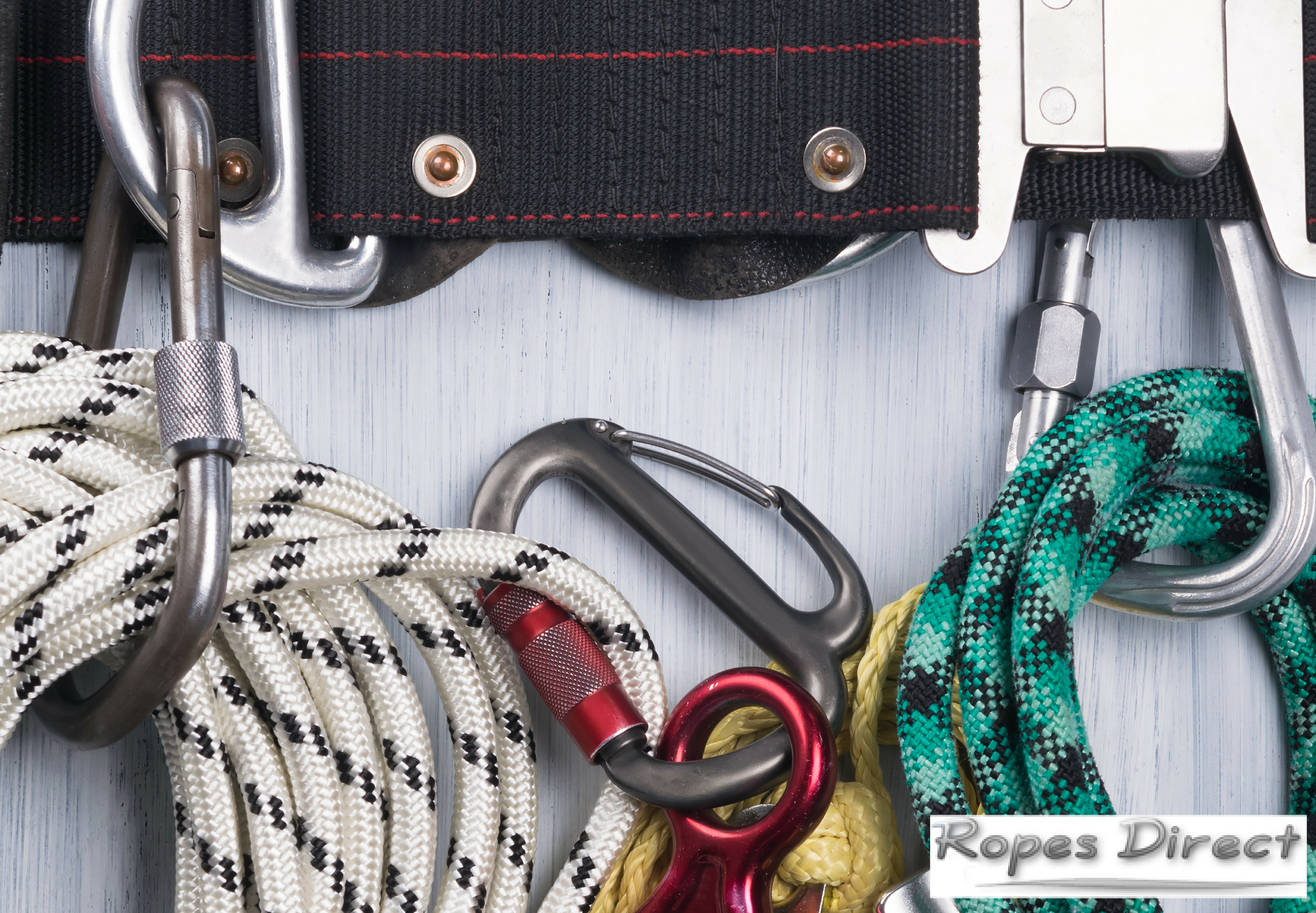Whether you’re the owner of an industrial rope work company or you just like to rock climb in your spare time, the chances are, you’re going to need carbine hooks. These simple rope fittings are a quick and easy way to connect different components, offering reliable support and ensuring your safety. But the question is, do you know which type of carbine hook is best for your needs?
In the following blog, we cover everything that you should know about carbine hooks – answering your most commonly asked questions and helping you to select the best carabiner for the job.
What is a carbine hook?
Carbine hooks, also known as carabiners, are a small loop of metal with a spring-loaded section on one side. This section can be opened and closed as many times as you wish and it allows rope (and other components) to be connected in a secure yet completely reversible manner.
Typically made from aluminium or steel, they have four basic components, including a gate, spine, nose and basket. The gate is the section which opens and closes, whilst the spine is the longest side of the hook (which sits opposite). The nose is the part to which the gate snaps shut and the basket is the distinct bend in the carabiner – where the rope will naturally sit when clipped into place.
What types of carabiner are available?
They are several different types of carbine hook to choose from and these vary on four main factors:
-
Locking Mechanism
Both non-locking and locking carbine hooks are available. Whilst non-locking hooks simply spring open and closed, when shut, the gate of a locking hook is secured in place. This either happens automatically or due to the tightening of a screw. Locking carabiners are usually heavier than non-locking varieties; however, in most cases, they are essential for health and safety reasons.
-
Size
Carabiners come in a variety of different sizes and they are generally categorised as being ‘full-size’ or ‘mini’. The size that you need will depend on the intended application. Smaller carbine hooks are lighter and take up less space. However, they have a limited number of uses. In most situations, a larger (and heavier) hook will be the more practical and convenient option.
-
Shape
Although many different shapes are available, offset D and pear-shaped are the most common. These share a number of common traits. For example, they demonstrate a high strength-to-weight ratio, they have a large gate for easy clipping and they hold rope securely in place. However, thanks to their round basket, pear-shaped carabiners distribute weight more evenly and reduce rope wear. Once again, the right hook shape for you will depend on its intended application.
-
Safe working load
Carbine hooks also differ greatly in terms of their safe working load (SWL) – that is, the level of weight they are capable of holding. Before investing in a new hook, it is therefore important to note its SWL. You need to make sure it is strong enough to cope with the weight of its intended use.
Where can I buy carbine hooks?
Ropes Direct is an exclusive online supplier of rope and rope accessories and, as part of our rope fittings department, we currently stock a fantastic range of carbine hooks. These are available in steel and stainless steel. We stock both locking and non-locking varieties, in numerous different sizes, and they are suitable for a diverse range of domestic and commercial applications.
If you would like to find out more about carabiner hooks and which is the best type for you, please feel free to get in touch. Our team of experts are always on hand and happy to answer your questions. Simply call us today on 01692 671721 or send an email to info@ropesdirect.co.uk.
Which type of carbine hooks is right for you? Find out in our latest blog and, for high-quality carabiner hooks, get in touch with Ropes Direct today!

